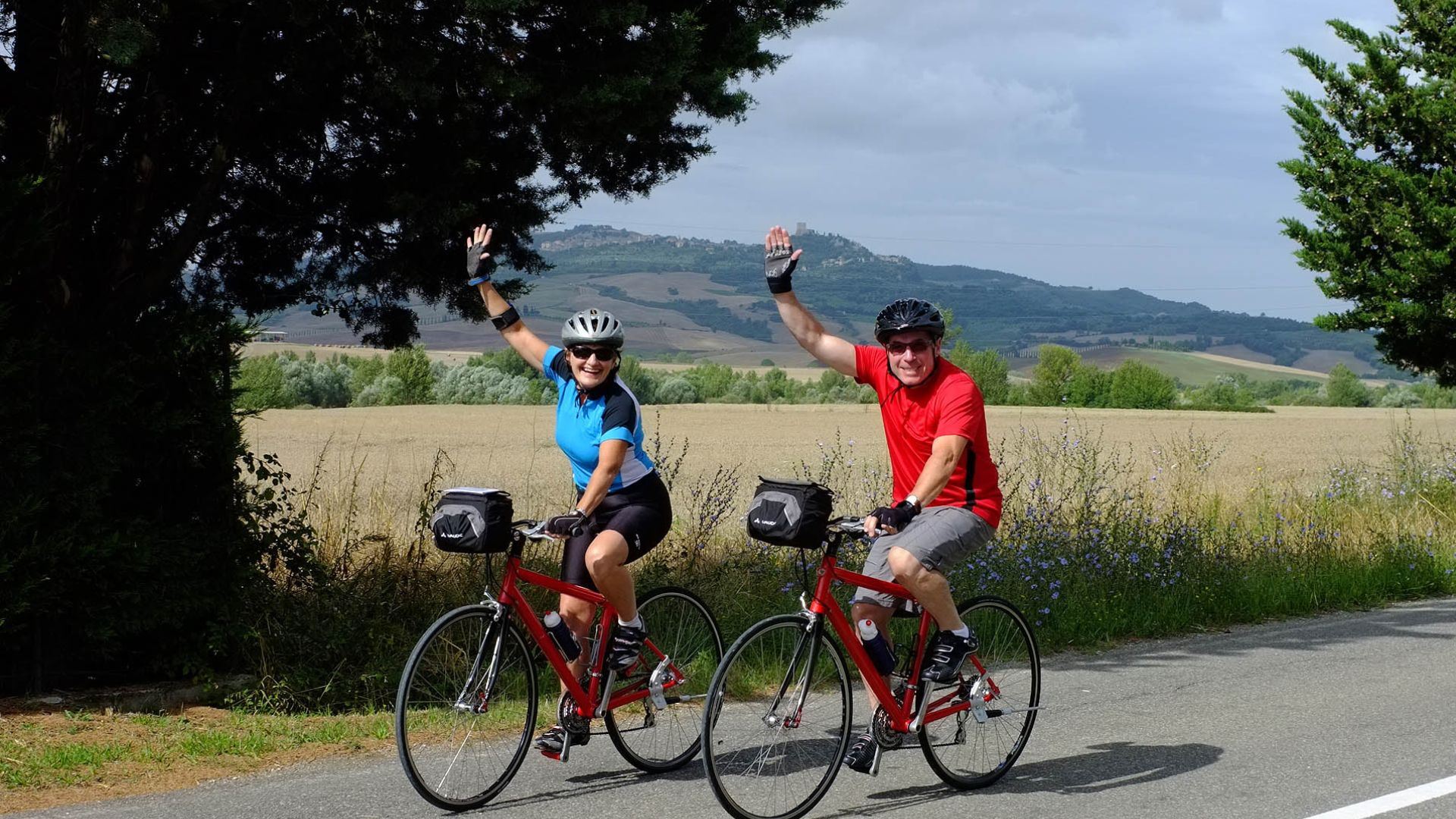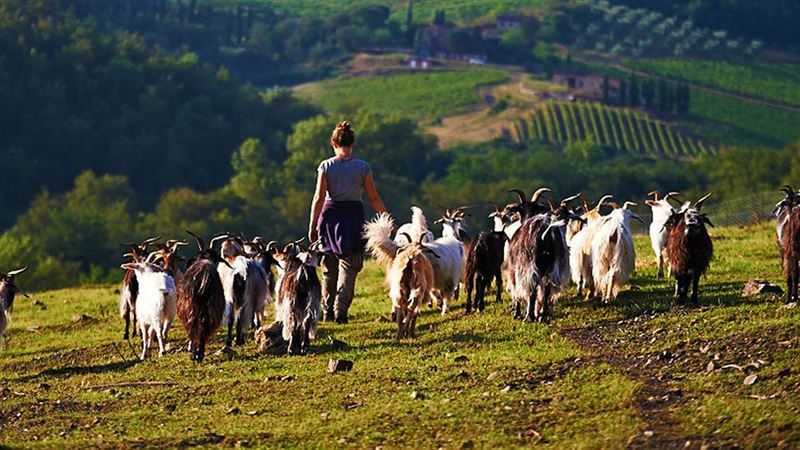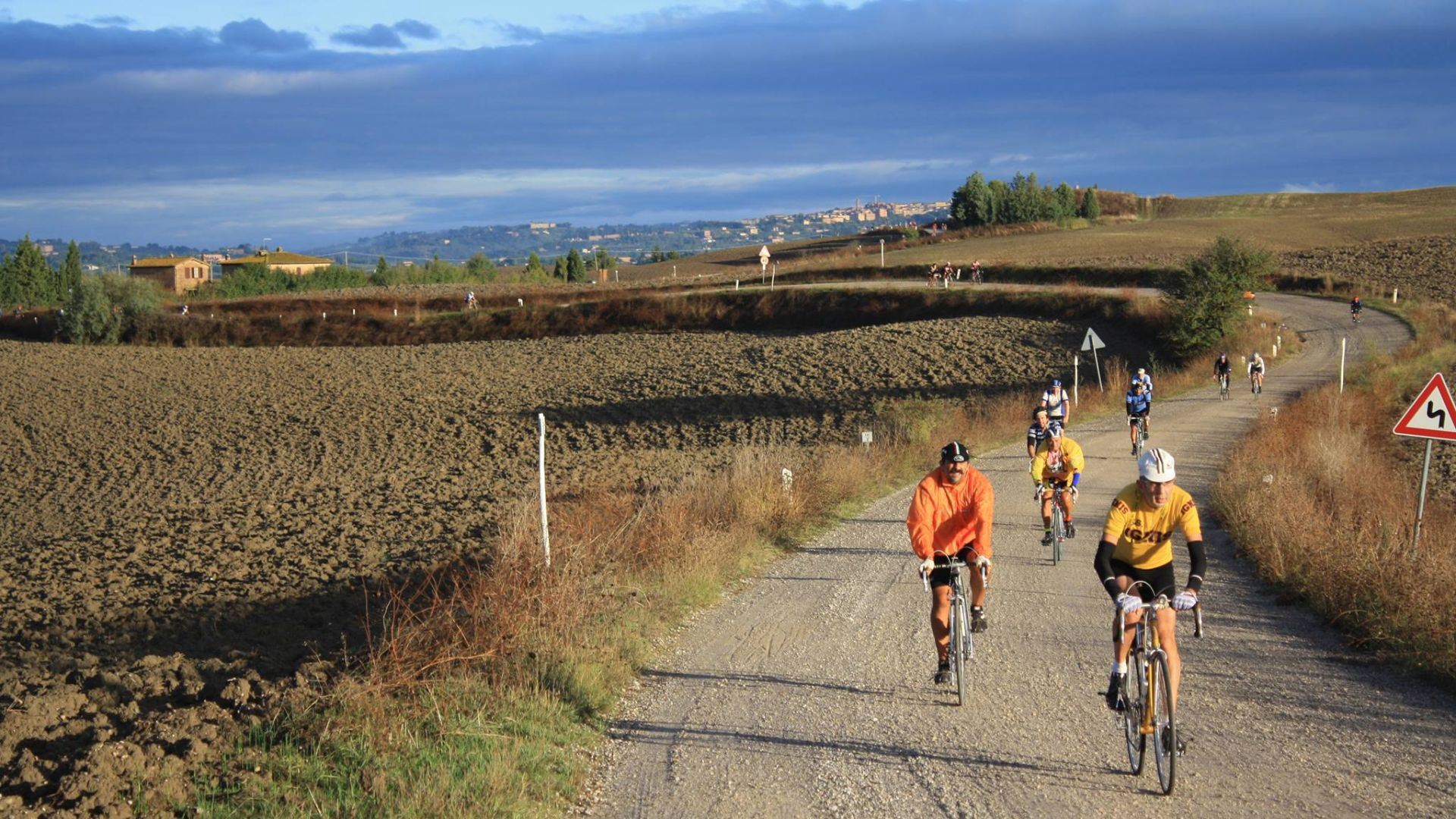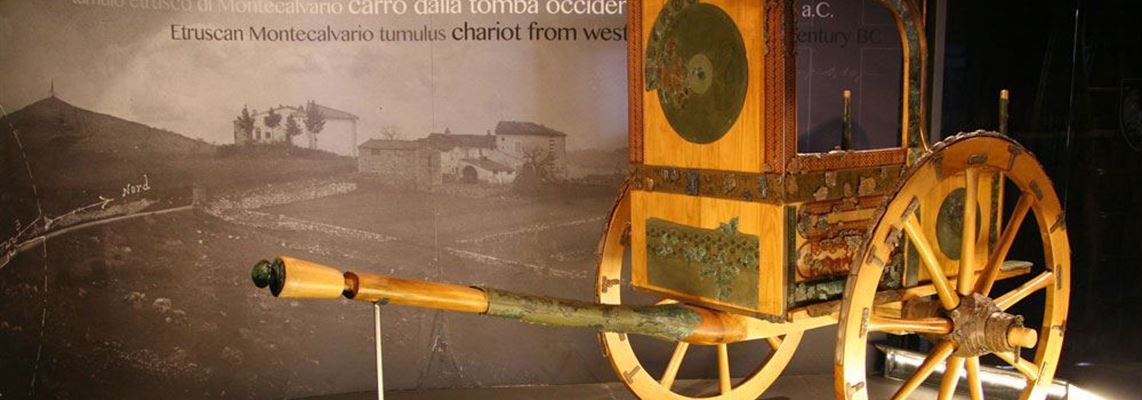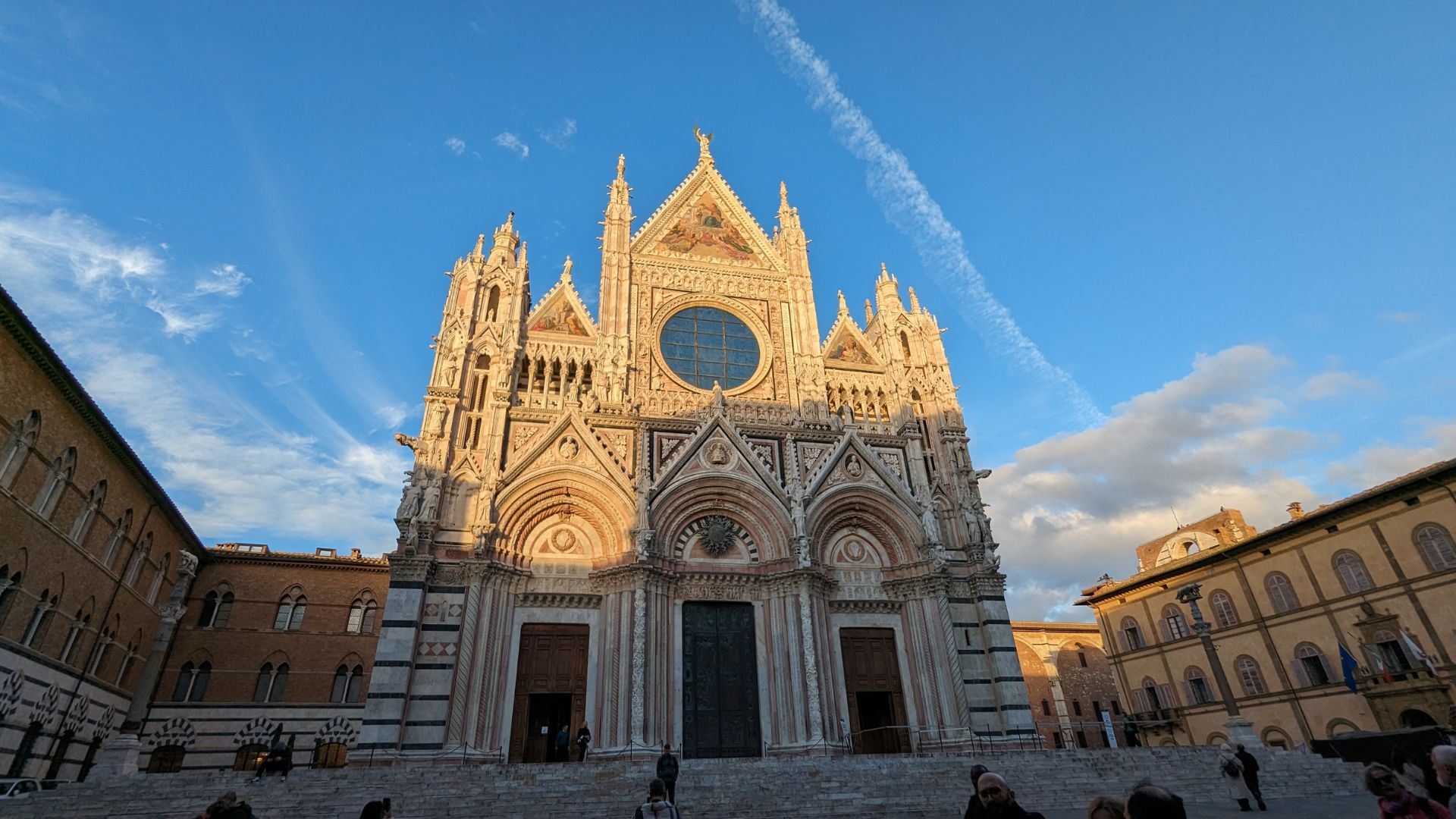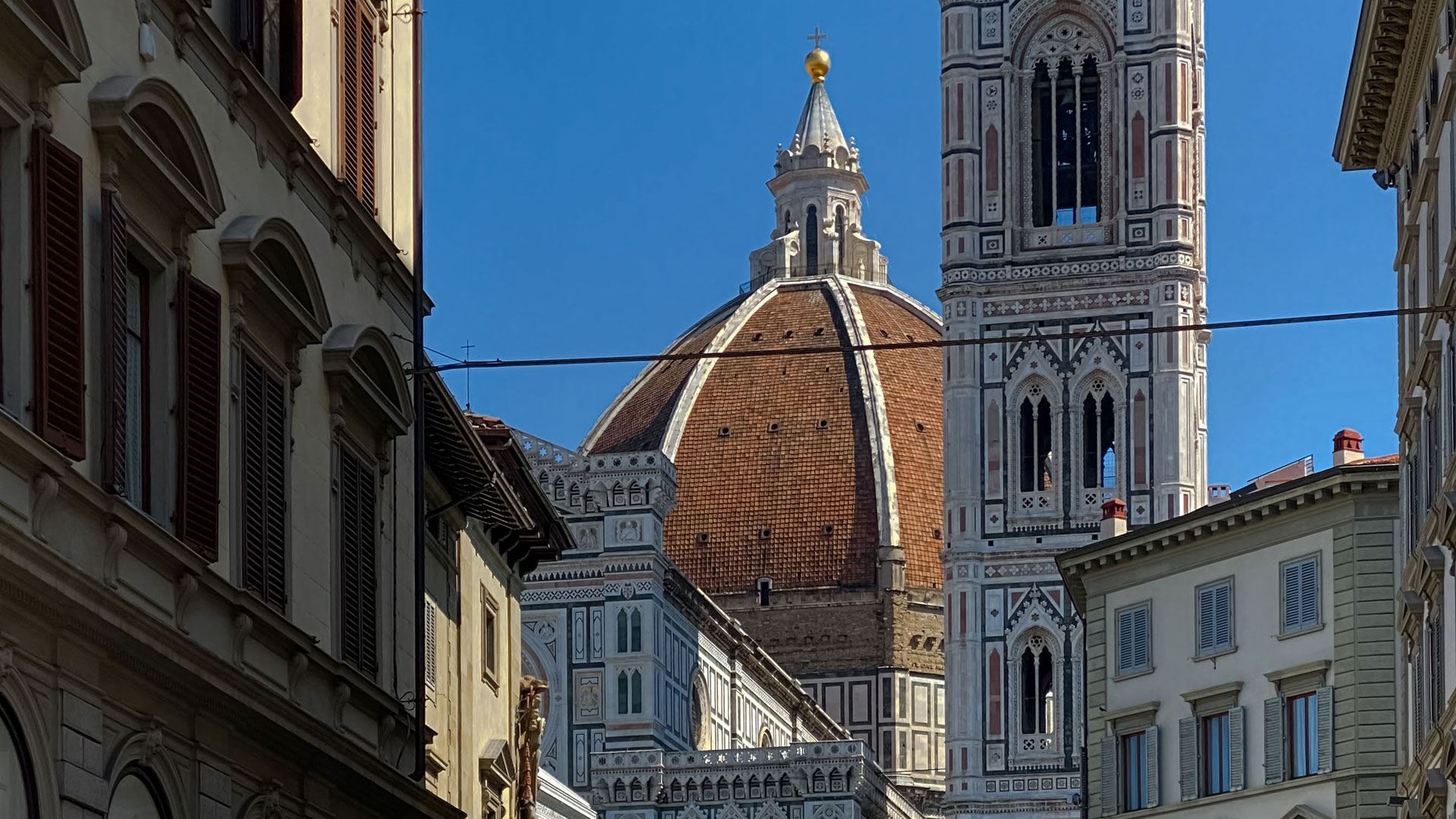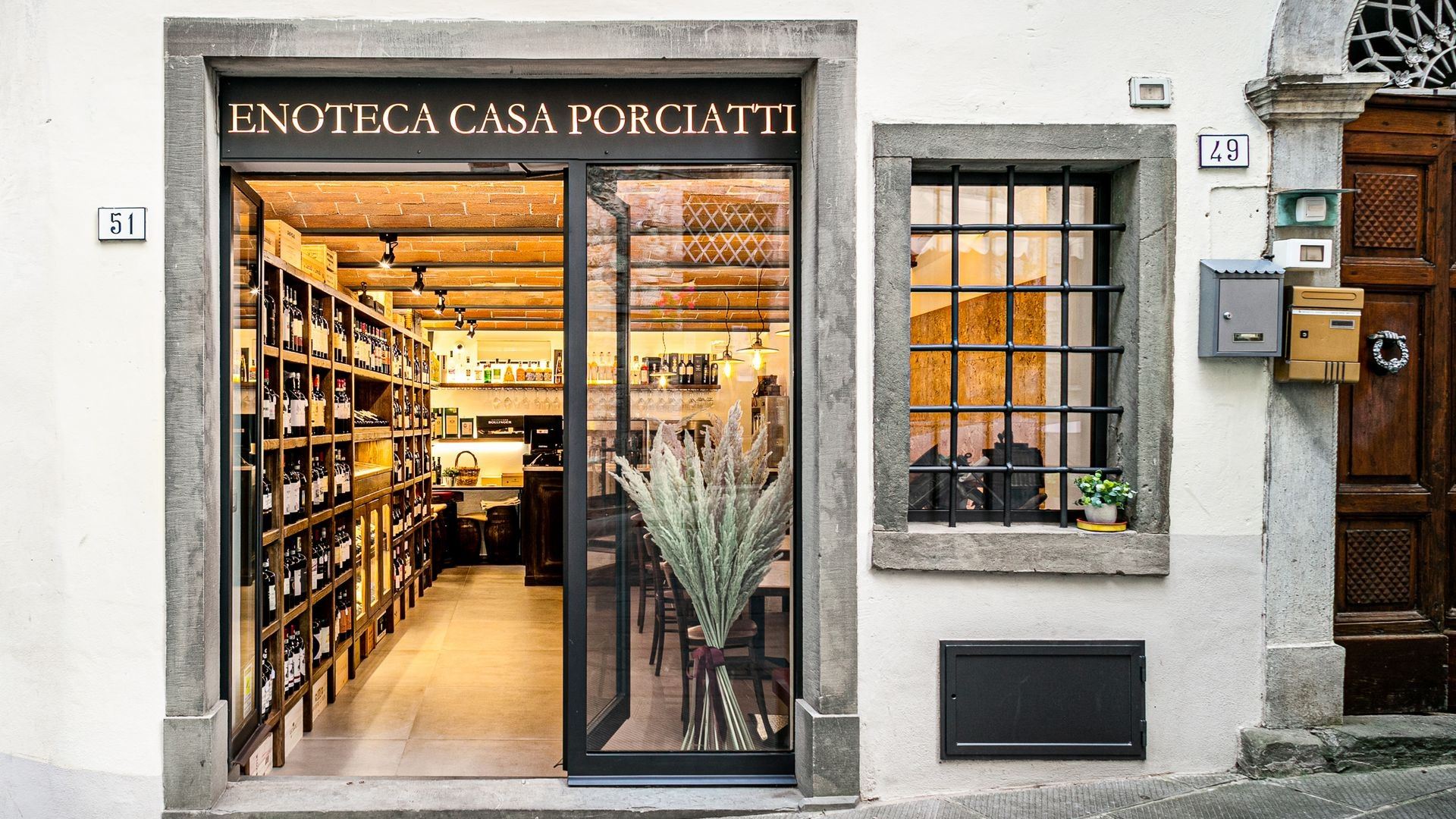Gaiole is, of course, wine country but also castle country and cycling country. A decade ago, this sleepy market town was dubbed the world’s most idyllic place to live. Not much has changed since then so lap up the quality of life. This market hub is forever linked to the Ricasoli wine dynasty, whose ancestors supposedly launched the Chianti Classico brand in Brolio Castle. Apart from boasting of being the birthplace of Chianti Classico, Gaiole is celebrated in its own right. In medieval times it was one of the three capitals of the Chianti League, along with Castellina and Radda. The hilltop town is set among oak and chestnut forests but also surveys vineyards and olive groves. As a former military stronghold, Gaiole is ringed by medieval castles and fortified abbeys. The triangular-shaped main square is a stepping-stone to explorations of castles, cosy inns, wine estates and ancient abbeys.
Are you inspired to visit Tuscany and explore a region rich in culture, beauty and history? Explore our collection of villas near Gaiole in Chianti to start planning your Tuscan holiday today.
We are here to help. Reach out to our Villa Specialists for personalised recommendations.
Gaiole in Chianti
-
-

Top Ten Things to Do
Gaiole makes a great stepping-stone to explorations of local inns, wine estates and ancient abbeys. From the fortified monastery of Badia di Coltibuono to Castello di Brolio. a former Florentine castle with its gaze firmly fixed on its ancient enemy, Siena. The area abounds in wine estates and gourmet inns but there are enough challenging cycle trails to keep you fit en route. As for culture, consider day trips to Siena, Florence or charming Castellina.
This is just a taster to the Chianti. See our specific guides to top Chianti outposts, all accessed through our Destinations listings. -

1. Easy e-bike rides through the Chianti
Gaiole is cycling country so make the most of it, even if you are not a fitness fiend on a racing bike. The reason the Chianti is so scenic is because it's so hilly. If you lack thighs of steel or the desire to face steepish ascents, then consider an e-bike. Based in Gaiole, Tuscany E-bike Rental run guided or self-guided e-bike tours in the Chianti area. These power-assisted bicycles are easy to use, even for first-timers. On downhill slopes, they work like a conventional bicycle but on long, flat runs or if you’re going uphill, the electric motor cuts in and provides the help you need to reach your destination without breaking into a sweat. The e-bikes can be rented for as little as an hour or as long as a week.
One typical guided route from Gaiole could take in the rolling hills of the Chianti, the Castello di Brolio and distant views of Siena. All this including a light lunch and simple wine-tasting on an atmospheric estate. This particular tour is a three-hour, 46 km affair reaching an altitude of 518 metres. There are plenty of easier or more challenging routes that can be suggested.
Address: Tuscany E-bike Rental
Via Roma 82
53013
Gaiole in Chianti
Tel: 0577 749355
Web: www.tuscanyebikerental.com -
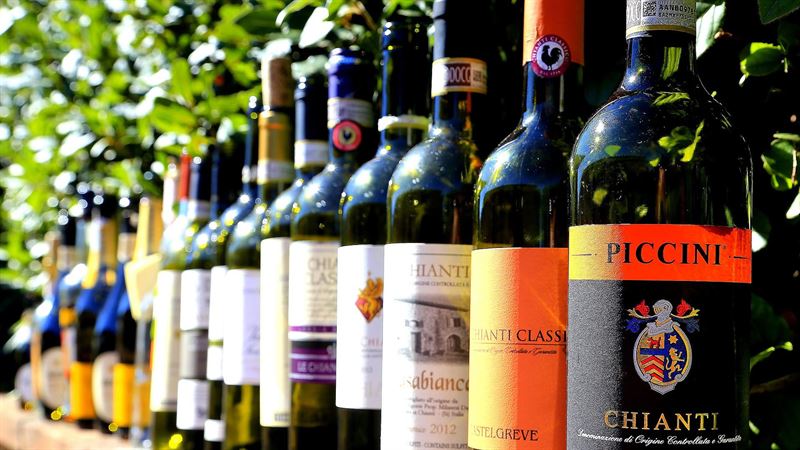
2. Castello di Brolio - birthplace of Chianti Classico
Set around 10 km south of Gaiole, and 20 km from Siena, Castello di Brolio makes for a memorable day out. As well as a ramble through Chianti wine history, take in the sweeping vineyard views from the ramparts. Of the many former Florentine castles in the woods, Castello di Brolio is the most impressive – not least because of its views over the original Chianti vineyards stretching as far as Siena and Monte Amiata. This castle is a curious hybrid, a villa remodelled as a neo-Gothic castle.
Tuscan aristocrats, including the Antinori and Frescobaldi families, have often been making wine since Renaissance times. Baron Ricasoli, whose descendants now run the castellated villa, first designated the grape mixes to be used in Chianti wine. In the mid19th-century, Barone Bettino Ricasoli capitalised on improvements in production and spearheaded the modernisation of wine-making, with the establishment of the Chianti Classico brand. Essentially, Barone Ricasoli founded the modern Chianti wine industry, with his wine business continued by the present family. A Chianti consortium, the Consorzio Chianti Classico, acts as a quality control for all Chianti Classico produced in the region. The designated symbol, the gallo nero (black cockerel) designates quality.
Book a visit to the castle gardens and cellars. Tour the estate, taste the wines, and see the family museum. The sunset tour is the most private and includes dinner in L’Osteria del Castello, the Ricasoli’s restaurant. Your castle ticket also allows for a free wine-tasting in the Ricasoli tasting rooms below the castle. Sample Barone Ricasoli Castello di Brolio Chianti Classico 2006. For more on the castle history, see Castello di Brolio in our general Chianti guide. For more on the history of Chianti Classico, see our Radda guide and visit the Casa Chianti Classico.
Address: Castello di Brolio
Localita Madonna a Brolio
53013
Gaiole di Chianti
Tel: 0577 7301
Web: www.ricasoli.com -
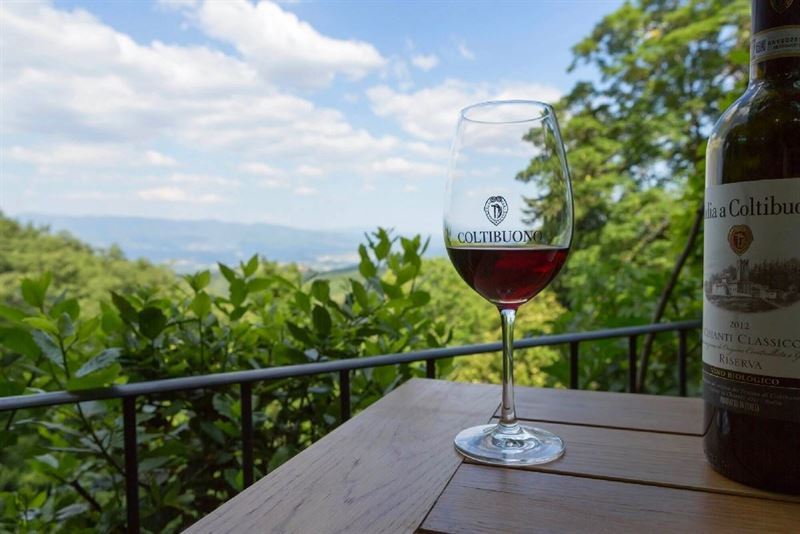
3. Badia a Coltibuono – dreamy abbey wine and oil estate
Set just north of Gaiole and Radda, this former Benedictine abbey surveys gorgeous estate vineyards. Much like Antinori’s Badia a Passignano, which is closer to Greve, Badia a Coltibuono is linked to a medieval monastic foundation. It was the monks who established viticulture here, little knowing that their estates would still be flourishing so many centuries later.
The tranquil oil and wine estate commands landscape that has been cultivated since time immemorial. In Tuscany it is hard to separate the wine and oil from the scenery. The aptly named Badia a Coltibuono (Abbey of the Good Harvest) is framed by vineyards, olive groves, chestnut and oak woods. Founded in 1051, the medieval abbey belonged to reformist Vallambrosan monks who established viticulture here. Since the Dissolution of the Monasteries in 1810, this medieval abbey has belonged to one family. The forward-looking Stucchi Prinetti family started off as Florentine bankers before pioneering the commercialisation of quality Chianti here. The family remains committed to sustainable farming.
The beguiling 15th-century cloisters, chapel and frescoed ceilings can be viewed as a guest of the Tuscan cookery school, while the 12th-century walls and bell-tower are open to all. You can also book a tour of the original monastic cellars and frescoed villa, followed by a wine-tasting. Below the former abbey are cellars filled with Chianti Classico, the abbey’s traditional living. No less famous are the aromatic chestnut honey and olive oil, the delicious Extravergine Badia a Coltibuono. Much of the produce can be bought on the premises or savoured in Ristorante Chianti, the recommended abbey restaurant, which occupies the former stables. You can also do a cookery course run by Benedetta Vitali, founder of the noted Florentine restaurant Cibreo. within the former Romanesque abbey.
Address: Localita Badia a Coltibuono
53013
Gaiole in Chianti
Tel: 0577 746110
Web: www.coltibuono.com -

4. Chianti Cashmere Goat Farm
If you’ve got young children in tow or are simply tired of wine estates, then visit a quirky Chianti Cashmere Goat Farm, north-west of Gaiole. Run by American-born Nora Kravis, this long-established cashmere farm goes from strength to strength. It’s fun but also represents sustainable farming at its best. Founder Nora Kravis left New York’s Long Island for Italy long ago and never looked back. She knows all the shepherds, herders, growers and weavers and cares for her goats as if they were family. At this stone farmhouse with a view, the kids can hold, pet and bottle-feed the kid goats. The goats are guarded by fluffy white Abruzzo shepherd dogs who act as guard dogs to keep any wolf pack at bay.
After getting your fill of cute goats and puppies, turn your attention to the cashmere itself. In colour, the superior cashmere goats are shades of cream, hazelnut, brown, grey and charcoal so the yarn can be used undyed in its original shade. Cashmere is the fine, fluffy, downy undercoat produced by a cashmere goat and is apparently ten times lighter and warmer than wool. Knitters can choose some lovely fibres and sustainable cashmere yarn. You can also buy home textiles hand-made in Tuscany as well as hand-woven, scarves, shawls, throws, hats, socks and baby blankets.
If you’re won over, the farm can organize spinning, weaving, knitting or embroidery classes with local Italian artisans who already work with them. Best of all, there’s the new `be a shepherd for the day’ experience. This is fun for all the family, with full-immersion in the life of a cashmere goat shepherd. Guests get to accompany a herd of goats through the fields and woods surrounding the farm, stopping for a wine-tasting at a neighbouring farm, and coming back to the cashmere farm for a lavish farm lunch. The farm and gift shop are open in the afternoon from Easter to October.
Address: Chianti Cashmere,
Azienda Agricola La Penisola
La Penisola
53017
Radda in Chianti
Tel: 0577 738080
Web: www.chianticashmere.com -

5. Contemporary art at Castello di Ama
As one of the leading Chianti Classico producers, this working wine estate south-west of Gaiole is known for its superb, full-bodied reds. Castello di Ama is not even a castle but a hilltop wine estate and villa restaurant, doubling as a centre of contemporary art. At first sight it’s yet another traditional borgo, a stone-built hamlet nestling in the Chianti hills. Slowly, it becomes clear that wine, food and contemporary art are all part of the picture. This was the wine estate that entranced the Obamas on their post-presidential tour of Tuscany.
The wine is master-minded by Tuscan Marco Pallanti, regularly crowned wine-maker of the year, with wines often in the world’s top ten lists. The estate’s San Lorenzo is a Chianti Classico gran selezione DOCG, a category considered the finest expression of its kind. The 80 hectares of vineyards cover different terroirs, from rocky schist to clay and gravel, with another 40 hectares given over to olive groves. The olives end up in the estate’s extra-virgin DOP Chianti Classico olive oil.
The grounds are home to a world-class collection of contemporary art installations. This ambitious collection, Castello di Ama per l’Arte Contemporanea (Castello di Ama for Contemporary Art)
The sculptures respond to the setting, much as the wines do, and are being added to each year. Castello di Ama repurposes original buildings, such as an on-site church and wine cellar, to showcase art installations in a striking way. The art is hard-core contemporary rather than soothingly pastoral.
The site-specific contemporary art is commissioned from artists of the calibre of Anish Kapoor, Daniel Buren, Louise Bourgeois, Michelangelo Pistoletto, Hiroshi Sugimoto and Lee Ufan. The most engaging and accessible is the show-stopping mirrored installation by Daniel Buren that reflects the rolling hills. A Louise Bourgeois sculpture entitled Topiary is ingeniously hidden beneath a grate in the wine cellar floor and depicts a female form flowering into a male phallus. Aima, a thought-provoking Anish Kapoor light installation, illuminates the estate’s tiny chapel.
Book a wine tour and tasting, come for lunch, visit the sculpture park, or simply visit the estate’s Enoteca to sample and buy the wines, olive oil and nature-inspired home fragrances.
Address: Castello di Ama, Localita Ama
53013
Gaiole in Chianti
Tel: 0577 746069
Web: www.castellodiama.com -

6. Serious cycling – as a spectator or participant
L’Eroica – the “heroic” cycling race – is a Chianti legend but you could do stretches of the routes at any time. You don’t need a handlebar moustache or legs of steel but you might have those by the end of the ride. L’Eroica is the celebrated amateur event that allows cyclists from around the world to experience the beauty and history of the region while riding classic or vintage bikes. The October event starts and finishes in Gaiole and includes week-long festivities, from wine-tastings to food markets.
The routes cover much of the Chianti. including Gaiole, Montefiridolfi, Panzano and Castellina. Riders can choose routes to match their abilities; the shortest option is 46 km (27 miles); the longest is 209 km (130 miles). The race draws Italian and international riders, ranging in age from 15 to 90, with the occasional world champion joining in. Because there are no time trials, stopping for a sandwich and a glass of Chianti is perfectly acceptable. Nor is there any doping - it’s all about the natural highs.
You could do the three-hour “leisure route” over 46 km, which includes views of Brolio Castle and even the skyline of Siena. Other routes are tougher, including the 75-km Radda route. For the more challenging routes, it’s less an easy ride than painful fun. On steel-framed classic or vintage bikes, racing along gravel tracks is not always comfortable. The rides may be low to medium altitude but are full of short, steep, challenging climbs. Expect plenty of bouncing, sliding and braking. The pleasures are about cycling camaraderie and the nostalgia of the vintage ride. There’s also the joy of the rolling Chianti countryside, vineyards and olive groves, small medieval towns and enchanting Renaissance vistas en route. Riding in the Chianti is characterized by quiet, twisting roads, winding ribbons of pleasure, interspersed with sweeping panoramas, short, challenging climbs and thrilling descents. If all this sounds too much hard work, then simply be a spectator. Or choose to hire an e-bike and do a less taxing route.
Web: https://eroica.cc/en/gaiole -

7. Visit Volpaia, a quaint hilltop village
Volpaia, an enchanting medieval hamlet north-west of Gaiole, is reached along a scenic winding road. Framed by walls and towers, this fortified hamlet has retained its medieval layout and defensive character. Book an unusual wine-tasting and cellar tour in the Castello di Volpaia estate in the heart of the hamlet. The cellars start from a sacristy and end up in yet more cellars hidden below churches. In Volpaia, once sacred spaces are now given over to wine-making. It’s a mysterious process. The wine is moved by means of a maze of interconnected stainless steel pipes. Even to reach the tasting room involves traipsing along narrow corridors and ancient staircases. The crypt of the Renaissance-era Commenda di Sant’Eufrosino church is now used to store barrels of the estate’s ageing wine.
For more on this fascinating fortified village, including dining options, see our Volpaia guide.
-

8. Etruscan life at Castellina Archaeological Museum
Visit neighbouring Castellina in Chianti to get to grips with Etruscan civilisation in the Chianti.
The former medieval castle is now a fortified town hall hiding this small, Etruscan-centred archaeological museum. Known as the Museo Archeologico del Chianti Senese, the museum focuses on finds unearthed in Sienese Chianti, including from Castellina, Gaiole, Radda and Castelnuovo Berardenga. In particular, the museum displays Etruscan finds from the 7th-century-BC Montecalvario tombs, Castellina’s aristocratic Etruscan burial mound. Admire the newly reconstructed Montecalvario chariot, with its bronze and iron decorated plates. Look at the talismanic treasures placed with the dead for their final journey — objects such as a gold earring or a bronze belt.
These Etruscan tombs were built nearly 3,000 years ago but the creators can feel very much like ourselves. On view is an amphora decorated with a scene of revellers at a feast. As in the contemporary Chianti, wine plays a significant role. In Etruscan times, wine was a sign of status, and drunk at rituals and ceremonies. Generally, the wine was mixed with honey and spices but, more curiously, there was also a version featuring grated cheese.
This castle setting is about far more than the Etruscans so you can also explore the fortress, a former stronghold of the Florentine Republic during its century-long war against Siena. End your explorations with the tower-top walkway and sweeping views from medieval Castellina to the Chianti mountains to the east, and San Gimignano and the Colle di Val d’Elsa valley to the west.
Address: Piazza del Comune 17
53011
Castellina in Chianti
Tel: 0577 742090
Web: http://www.museoarcheologicochianti.it/en/ -

9. Day trip to Siena
Siena is a forty-minute drive from Gaiole and makes a magical day trip. Siena frames the southern end of the Chianti and so is convenient for anyone based here. As a Gothic city built on a human scale, Siena is effortlessly civilised and at ease with itself. All roads lead to Il Campo, the beguiling, shell-like central square, shaped like an amphitheatre. Sit at a terraced café on the sloping side of the square and spot the division of the paved surface into nine segments, recording the wise Council of Nine who governed Siena from the mid-13th century to the early 14th. Consider climbing the slender Torre del Mangia, with sultry views over a pink piazza and Siena’s rooftops, even if the views from the Cathedral rooftops are even better.
Check our Siena guide to see what appeals most.
-

10. Art-filled Florence
Although ninety minutes’ drive from Gaiole, Florence still makes a must-see day trip for first-timers to the Renaissance-heavy capital. Despite devouring the checklist of major sights, steer clear of suffocating under the weight of treasures. Allow time for aimless wandering. Beyond the selfie sticks and statuary awaits a funky foodie haunt with sleek cafes, superb cooking and seriously edible markets. Florence is not fusty. Nor has the greedy city lost its gutsy Tuscan soul: traditional inns still serve earthy peasant fare, including macho steaks. Beware of trying to do too much on a day trip. Balance visits to galleries with wanderings in search of the perfect trattoria or the perfect view.
Check our Florence guide to see what appeals most.
If visiting a number of museums, consider buying a Firenze Card online (www.firenzecard.it)
-
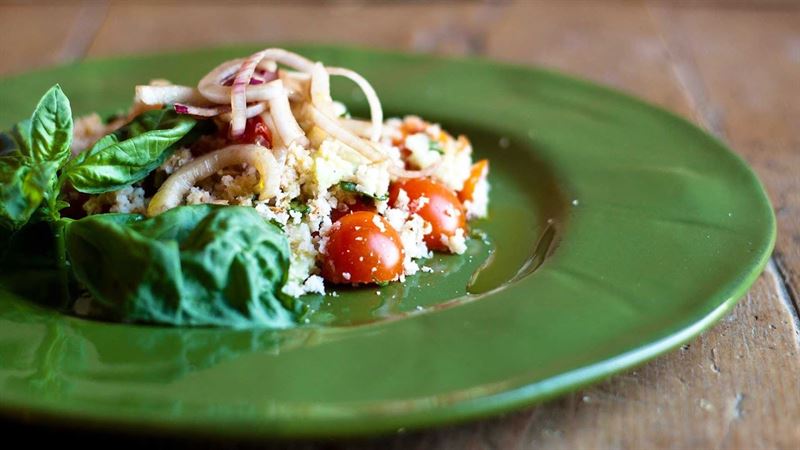
Eating & Drinking
Remember that this area is the birthplace of Chianti Classico. Look out for the symbol of the Black Rooster (also known as the Black Cockerel) which denotes Chianti Classico. The wine is made from Sangiovese grapes, or a Sangiovese blend, and aged for 14 months in French oak barrels followed by at least seven months in the bottle, or two years for a Riserva.
The local restaurants range from fine-dining to fuss-free inns and all specialise in versions of Tuscan cuisine. The most memorable spots are in castles and wine estates in Gaiole territory outside town. Pasta can be made with organic local flour and includes such stalwarts as pappardelle di lepre (pasta ribbons in hare sauce) or the same pasta with wild boar (cinghiale).
This is just a taster to the Chianti. See our restaurant recommendations below and also see our other guides to top Chianti towns and villages, all accessed through our Destinations listings. -
L’Osteria al Ponte
Popular with locals, this is a fuss-free, family-friendly inn in Gaiole. You can dine in the garden on a summer’s evening. The good-value menu features traditional Tuscan staples, sometimes with a creative twist. Classic Chianti dishes include crostini neri, tagliatelle with truffles, wild boar stew, or pasta with porcini mushrooms. There’s also a pizza menu. The wine list showcases wines from lesser-known local vineyards, such as Rocca di Castagnoli and Castello di San Sano.
Address: Via Antonio Casabianca 25
53013
Gaiole in Chianti
Tel: 0577 744007 -
Il Ristorante Chianti
This popular stop on the Chianti trail lies along scenic roads about 6 km north of Gaiole or 9 km east of Radda. The rural restaurant is set on the glorious wine and olive oil estate of Badia a Coltibuono, complete with its 11th-century abbey. Housed in the former stables, the inn makes use of a charming terrace in summer. Dine under a rose-trailing pergola and tuck into largely organic produce, including from the estate. Modern Tuscan dishes include cured meats, organic pasta with wild duck sauce, fennel soup, lamb or rabbit mains, and home-made fruit tarts or chestnut pastries. The impressive seasonal tasting menu is under €60, complete with a wine pairing of four wines. The estate wine, oil and chestnut honey are also on sale.
Address: Badia a Coltibuono,
Localita Badia a Coltibuono,
53013
Gaiole in Chianti
Tel: 0577 749031
Web: www.ristorante.coltibuono.com -

La Casa Porciatti
This homely wine bar is tucked into an early 14th-century building in the heart of neighbouring Radda in Chianti . It also doubles as a good-value inn and wine shop. Along with a wide selection of Tuscan wines, you can tuck into taglieri, platters of home-cured meats or cheeses, along with porchetta (roast suckling pig). For something more substantial, choose stubby pici pasta with a meaty ragù sauce, ravioli with black truffle or hearty ribollita soup. Florentine tripe, wild boar stew and Sienese ossobuco are also on the menu.
Address: Piazza IV Novembre
53017
Radda in Chianti
Tel: 0577 738055
Web: www.casaporciatti.it -
Il Ristoro
Set on the lovely, rambling Castello di Ama wine estate deep in the Chianti hills south-west of Gaiole, this inn is all about showcasing the wine in an 18th-century villa. The short but seasonal menu is perfectly matched to the estate wines. Authentic, good-value dishes include pasta with wild boar sauce, chicken with black olives in wine sauce or a summery carrot and courgette soufflé with Pecorino sauce, and a hazelnut tart to finish. Pre-book a balcony table for sweeping views. To focus on the wine alone, choose the estate’s L’Enoteca.
Address: Castello di Ama
Localita Ama
53013
Gaiole in Chianti
Tel: 0577 746191
Web: www.castellodiama.com -
L’Osteria del Castello
Set south of Gaiole, this inn lies in Castello di Brolio, the ancestral castle estate of the Ricasoli wine dynasty. The inn itself is in the so-called bosco inglese (`English wood’) near the car park. The interior looks traditional yet contemporary, reflecting the message the estate would like to convey about both its wine and food. Dishes are elegant, creative twists on traditional Tuscan cuisine. Along with classic Florentine-influenced meat dishes, expect more fish than found in most of the Chianti. Such dishes as olive gnocchi in pecorino sauce or rabbit salad with crispy spelt can also be paired with Ricasoli wines. End with the homemade, crunchy cantuccini biscuits, ideally dipped in Vin Santo. Meals are mid-priced upwards, depending on the chosen wine. if you just want a wine-tasting, head to the contemporary cantina (cellars and tasting-room) which lies just outside the main gates of the estate.
Address: Castello di Brolio,
Localita Madonna a Brolio,
53013
Gaiole in Chianti
Tel: 0577 730290
Web: www.ricasoli.com -
Shopping
Browsing for ceramics in Gaiole or cashmere in Radda makes a change from wine-shopping. Tuscan ceramics made here and around Radda are often inspired by ancient models, including Renaissance designs. The Medici dynasty had sets of dishes designed for each of their country villas, virtually inventing the concept of elegant place setting. Also consider a foray to neighbouring Castellina to taste great ice cream and to stock up on speciality foodstuffs such as artisanal honey, bottled sauces and dried pasta.
-
Luxury designer outlets
For a complete change of scene, designer shopping fans could head to the luxury outlets in the Valdarno area. The Mall Firenze is a thirty-minute drive east from Florence, on the Pontassieve road. There’s also a direct shuttle bus there from Siena. After browsing the designer brands, end your shopping experience in the Mall’s Gucci café and restaurant.
Address: The Mall
Via Europa 8
50066
Leccio Reggello
Tel: 055 8657775
Web: www.themall.it -
Atelier Radianza
Dutch-born ceramicist and artist Lies Robbertsen runs this appealing local studio. She is inspired by nature and architecture and paints with oils and acrylics, as well as on pottery.
Address: Via San Martino 4
Frazione
Lecchi in Chianti
53013
Gaiole in Chianti
Tel: (+39) 3351741573
Web: https://www.radianza.com/html/english/contact.html -
Castello di Brolio shop
Castello di Brolio, a famous Chiantishire castle, lies between Gaiole and Castelnuovo Beradenga. The Brolio wine-tasting experience and gift shop can form part of a great day out, as does the route there. This is classic Chianti countryside, with its mix of vineyards, olive groves, oak and chestnut woods. Records attest to the Ricasoli family having been in wine since 1141 so count on buying some fine vintages and possibly even some lovely wine glasses. Along with Chianti Classico, the estate also produces Super Tuscans, such as Casalferro. Even so, the market leader in the Super Tuscan stakes is Ornellaia and Masseto, produced by the rival Frescobaldi wine barons. While at Brolio, book a visit to the castle cellars, tour the estate, taste the wines, and see the family museum.
Address: Castello di Brolio
Localita Madonna a Brolio
53013
Gaiole in Chianti
Tel: 0577 7301
Web: www.ricasoli.com -
Chianti Cashmere Goat Farm
Consider visiting the Chianti Cashmere Goat Farm outside Radda to see a delightful herd of cashmere goats. Or make it a proper outing. After petting or feeding the kid goats, browse for hand-woven Tuscan cashmere scarves, shawls, throws, hats, socks and baby blankets.
Address: Chianti Cashmere
Azienda Agricola La Penisola
La Penisola
53017
Radda in Chianti
Tel: 0577 738080
Web: www.chianticashmere.com -
Parking
The parking in Gaiole is outside the town centre on the Strada Provinciale 408 or in the car park on via Marconi. Note that most Tuscan towns operate a strict ZTL system, a Limited Traffic Zone. This means that the Centro Storico (historic centre) is essentially closed to traffic, particularly for non-residents. Cars will need to be left outside the walls. That said, the Chianti towns are small so present far less trouble than such cities as Florence and Siena.
Parking tips: for advice on individual Chianti places, please see our individual Destination guides.
Advice on ZTLs: You may see other cars crossing the ZTL boundary (Limited Traffic Zone) and assume you can proceed. Not so. The drivers crossing into the ZTL zone will probably be locals and have residents’ permits. Visitors do not so are liable to fines. Zones are monitored by cameras, so tickets are issued immediately and automatically, as soon as (and each time) the car crosses the ZTL boundary. -
Getting Around
The Chianti can be delightful driving country. Its appeal lies in the rolling countryside, array of vineyards and olive groves, relatively quiet roads, and the mix of small medieval towns. Public transport in the Chianti is rather sporadic so car hire makes the most sense if you want to explore the area properly. Driving in the Chianti can be deeply enjoyable experience, especially with a detailed map or GPS navigator to hand. For a great day out, try a customised tour with Chianti Taxi.
Greve, the main gateway from the north, lies on the SR222, commonly known as the Chiantigiana, about 30 km south of Florence and 40 km north of Siena. From Greve, the scenic Chiantigiana meanders through the Chianti, passing through most of the typical villages. This is a charming route to take by day. At night, however, you might encounter wild boars, porcupines or deer crossing the road.
From Florence and the Chiantigiana head towards Greve, then further south to Radda and Gaiole. Or pick up the Florence-Siena Raccordo Autostradale highway (known as the RA) and take the San Donato in Poggio exit before following the SP101, which becomes the SP76.
From Siena, leave town on the fast Florence-Siena Raccordo Autostradale highway (known as the RA), taking the Badesse exit for the SP 119, which becomes the SR222, the Chiantigiana. Or take the quieter, slower route from Siena: take the SR2, which becomes the more tranquil SR222 until Castellina and then onto Radda and Gaiole.
By private tour: Chianti Taxi, a reliable Panzano-based transport service offers day-long private tours around the Chianti and beyond. These are customised tours that can take in everything from olive oil mills and wine estates to Pecorino farms and hand-painted ceramics. With his comfortable minivan, owner Daniele Mogni has the inside track on what you can do in the Chianti. It’s worth splashing out for a day so you can relax and drink your fill at the wine estates.
Chianti Taxi. T: (+39) 389 8160050 & www.chiantitaxi.com
The Chianti by train: this is not an easy place to reach by rail. The train service barely touches Chianti's attractions, which is part of the reason why the area is so peaceful. The main Chianti station is Castellina in Chianti, which is on the Siena-Florence line but you need to change trains at Empoli.
The Chianti by bus: Buses connect Florence to Greve and Panzano but end there. These buses often provide a more useful service than the trains but the confusing 365 bus service (T: 800373760, freephone only & www.acvbus.it) still means that bus schedules are not always convenient and also operate a limited service on Sunday. Buses also connect Siena and Castellina: a Tiemme bus service (T: 0577 204111 & www.tiemmespa.it) operates around 7 services a day. Buses also connect Castellina and Radda: a Tiemme bus service (T: 0577 204111 & www.tiemmespa.it). Buses also connect Siena and Gaiole: a Tiemme bus service (T: 0577 204111 & www.tiemmespa.it).
On your bike: The Chianti is a lovely place to explore by bike. The combination of romantic Tuscan scenery and challenging gravel roads is what makes it enjoyable. The cycling races in the region also attract big crowds. Whether as a spectator or a participant, L’Eroica is worth following. This renowned amateur event that allows cyclists from around the world to experience the region while riding classic bikes. See Serious cycling – as a spectator or participant.









